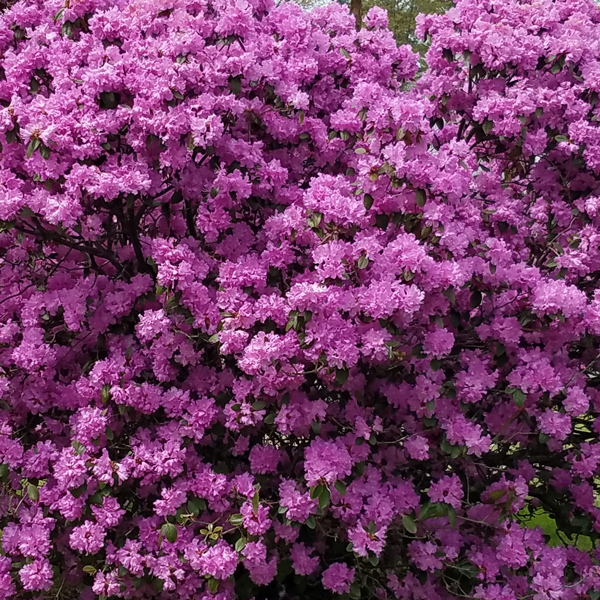By Wayne Mezitt
Every April, just as Spring’s embrace envelops our senses, these bright lavender-pink shrubs open their blooms, enlivening so many front yards, seemingly along every street. Their dazzling “welcome-to-spring” visual message is unmistakable—our world is awakening again!
This wasn’t always the case; from a long-term perspective, Rhododendron ‘PJM’ is a relatively new feature of our gardens. As a youngster in the late 1940s, I vividly recall a game our family played every Easter, driving from our Weston home to my grandfather’s new home in Hopkinton. Back then ‘PJM’ was just as spectacular, but so new to the market, that spotting five or eight of them on our 15-mile journey was cause for excitement.
Some may not know that ‘PJM’ was developed right here in Hopkinton by my dad Ed Mezitt, just as Weston Nurseries was relocating from our original Weston homestead. Although he was too modest to acknowledge it, Ed was truly a horticultural visionary. Growing up in his family’s nursery business, then studying architecture at Cornell and returning home, he instinctively sensed greater opportunities for creating and developing new plants that would perform better in New England’s challenging climate.
Ed intuitively recognized that small-leaf rhododendrons offered some important desirable features that had not yet been explored. Performing the cross (actually, his first attempt!) that created this new hybrid, then trying it out in the early 1940s as the rough and hilly Hopkinton nursery fields were being planted, helped verify its worth. Once Ed and his dad recognized how exceptional this new rhododendron appeared to be, Ed named it to honor his dad, Peter J. Mezitt, using his initials (a bold and unusual practice at that time), and they began growing as many as they could.
Back then, while we continued our ‘PJM’-sighting-game each succeeding Easter, we soon lost count on our annual tally: ‘PJM’ was showing up so much more frequently. It’s so very gratifying, even humbling, to realize how successful Ed’s efforts have proven. We are so fortunate. Our family takes special pride that today this unique hybrid has become one of the most popular and widely used in gardens and landscapes throughout this region and beyond.







